Prince William Loves Lu-Lu Belle
Our captain is not so much a daredevil as an artisan. He’s dancing with the rocks that line the freezing waters of Prince William Sound – and we’re loving it. He’s deftly maneuvering this incredibly gorgeous, hand-made sea-craft full of teak and mahogany and (I’m not kidding) Oriental carpets, and he’s sticking it’s polished aluminum and fiberglass nose up into the gnarliest rocky sea-cave I’ve ever almost bumped my nose on. Part of the cave roof has already collapsed (see upper-left), and I’m hoping the rest of it stays put for the next few minutes.
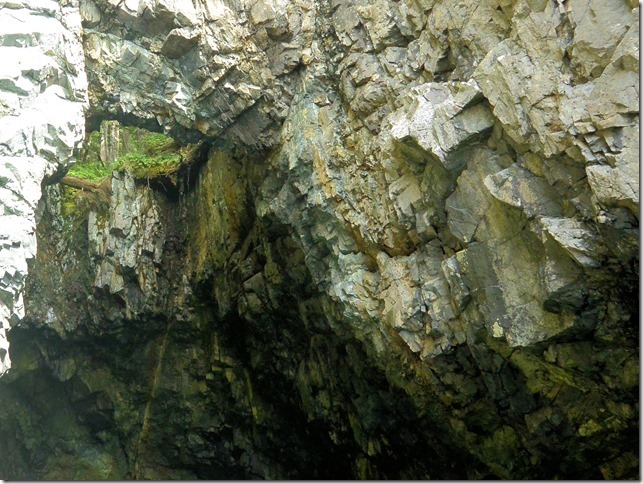
I have instantly shared his enthusiasm and his confidence, and I’m crouched in the bow pulpit furiously snapping my Nikon at the crags and puffins and sky-holes that threaten to put big scrapes in the Lu-Lu Belle’s lovely complexion. But no, Fred Rodolf has been at this trade for 38 years, and he plays Lu-Lu Belle against the waves and surges and rocks of the shoreline as well as Heifetz played the Stradivarius. With only stern screws (no bow thrusters), Fred dodges the Lu-Lu Belle in and out of several sea-side caves, all the while calmly and continuously narrating the wildlife, the history, and the anecdotes of this wonderful piece of Alaska. We, and the rest of the passengers, are enthralled. Cameras peep and clink and click and zoom like paparazzi at the Oscars.
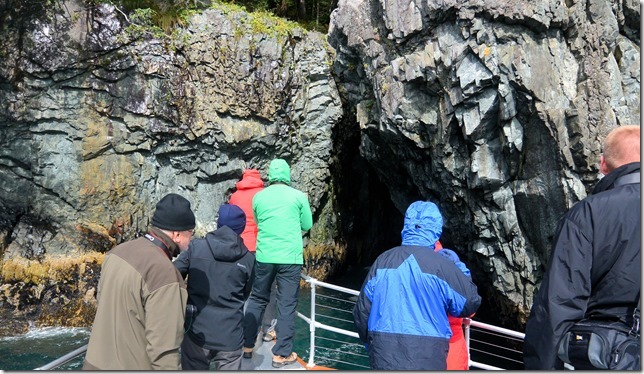
And all for a glimpse of these shy, sea-going parrots, the puffins. They defend well against predators like the bald eagles by nesting in rock crevices, and diving out of sight as soon as tourists point their cameras.
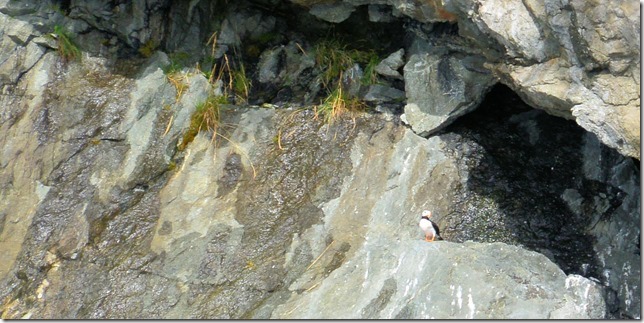
Our tour began only a half-hour before, with a placid departure from Valdez harbor. The captain’s non-stop monologue began almost immediately. I was amazed at how a guy who had done this several thousand times could make it sound so fresh and extemporaneous. And he kept at it, on-and-off but mostly on, for the entire 10-hour trip. The word “indefatigable” comes to mind.
Our goal for the day was pretty straightforward: check out the Sound, its wildlife, and the Columbia glacier. As simple as that might sound, it entailed a lot of traveling, starting and stopping, and a whole bunch of ooh-ing and aah-ing. For $125 a person, we think it’s one of the best deals in Alaska.
Some otters waved good-bye as we departed south-bound from the harbor. Always curious, their pug-nosed faces are some of the cutest sights on the water. Their fur is so dense that they keep warm without blubber. They have 1,000 hair follicles per inch of skin – that’s a million hollow, insulating hairs in one square inch!
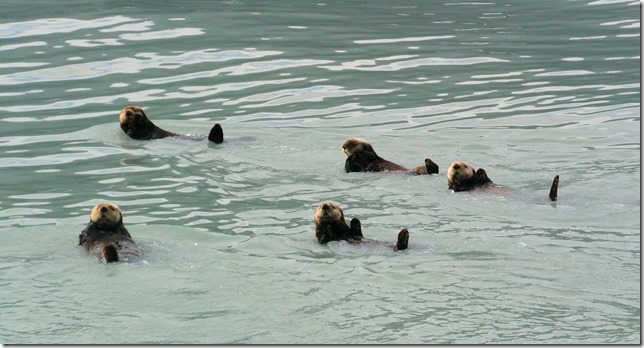
We headed off into the Sound. In the distance, an Alaskan Ferry jetted by at almost 40mph. There were plenty of folks on our boat, but most seemed a bit shy to ride in the bow pulpit. That made it easy for me to strike a pose there. Do I look like I’m having a great time? That’s because I am.
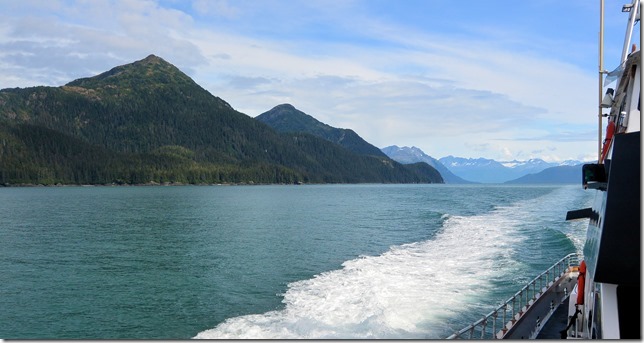
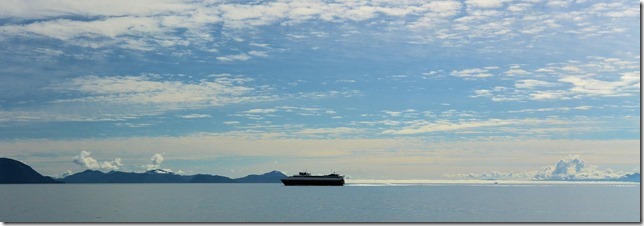
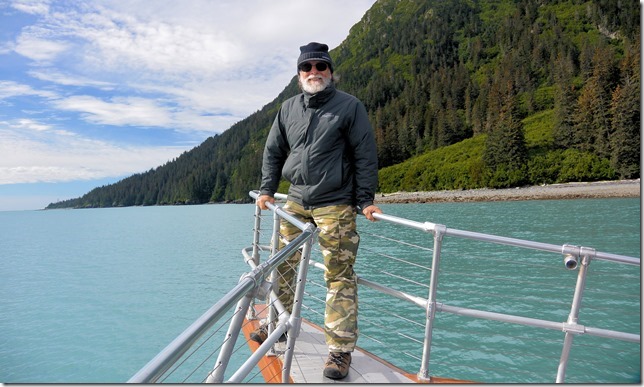
This year, the sea lions have been basking in the usual places, but at much reduced numbers. It’s hard to imagine the crowds of animals in “normal” times, when nearly ten times this number have been seen. At Monterey near our California home, we’ve been treated to a lot of California sea lions, but never ledged up on nearly sheer rock cliffs this way.
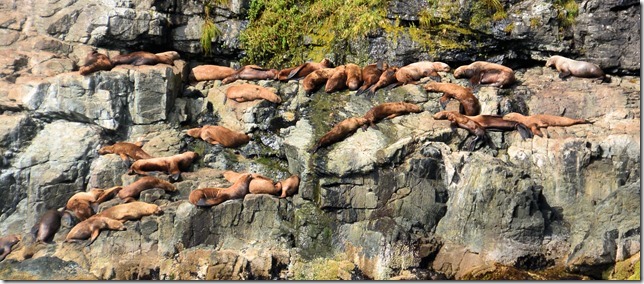
These beach-bathers are more like what we’re used to.
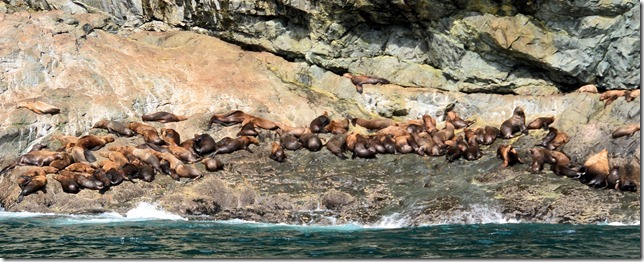
These Steller sea lions are much larger than their California cousins, as much as 1,500 pounds for an adult male. Another unusual sight with these animals was the water-rafting, something I’ve never seen in California. About 20-30 of them just bunched up together and swam around and among each other for no apparent reason other than socializing.
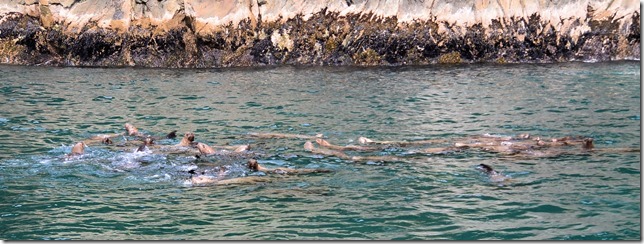
The males are just as territorial – here’s one trying to boss his harem around at surf’s edge.
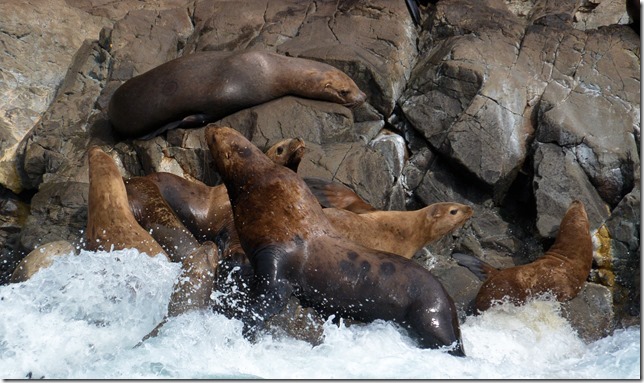
An unusual item popped up on this particular tour, not ordinarily on the itinerary. A fishing captain had been long in need of a replacement part, and it had been delayed multiple times. He’d gone out on a run without it, and then (of course) it arrived after he’d left. The Lu-Lu Belle cheerfully took on the task of hand-delivering the part to the fishing boat during its work-day. In return, we got to closely watch the daily routine of an Alaska fishing team – wonderfully described by Fred’s detailed narrative.
We arrived just as the boat and its tender were pulling in a purse-seine net. The tender is like a little tug that keeps the big boat from pulling itself over its own net.
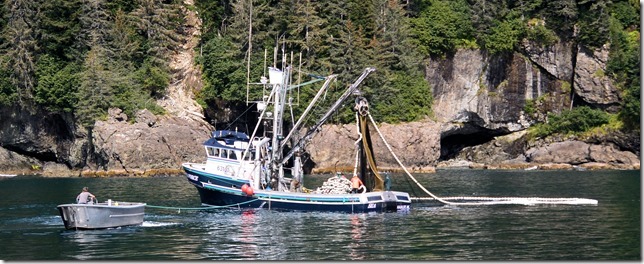
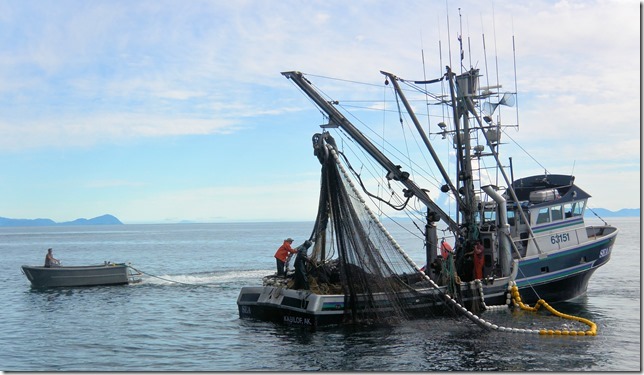
As the net is drawn in, the captured fish become bunched up. The catch is too large to be hauled on-board all at once, so a clever system of partial loading is used. The entire net is drawn close to the boat, then a mid-portion of it is winched up and dumped on-board. This is repeated several times for the full catch.
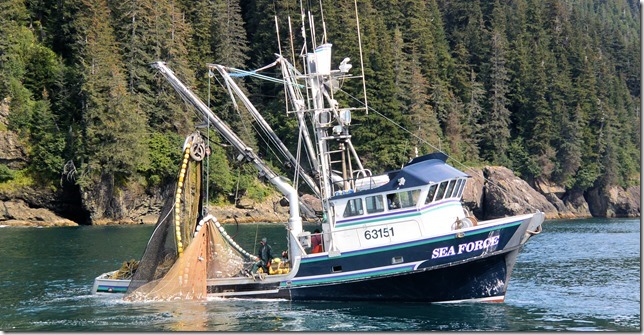
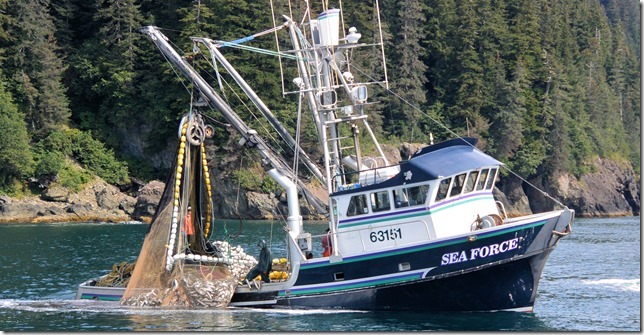
Once the catch is on-board, the deck is literally awash in fish, and the deckhands must slather them all into the hatches and the holding tanks. The fish are kept alive in cold water, off-loaded to transfer ships, and the whole process repeats.
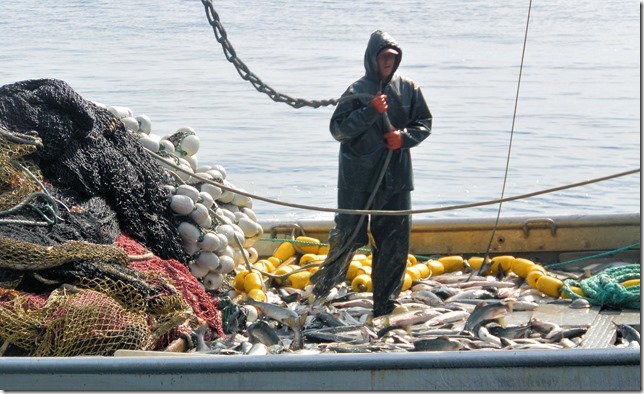
Let’s not forget that long-awaited package! The Lu-Lu Belle was nosed up to the fishing boat, and our lovely crew member extended a welcome fishing-net to a fishing boat deck-hand. He didn’t notice it right away, but there was a pack of fresh-baked brownies along with the spare part. Smiles all around.
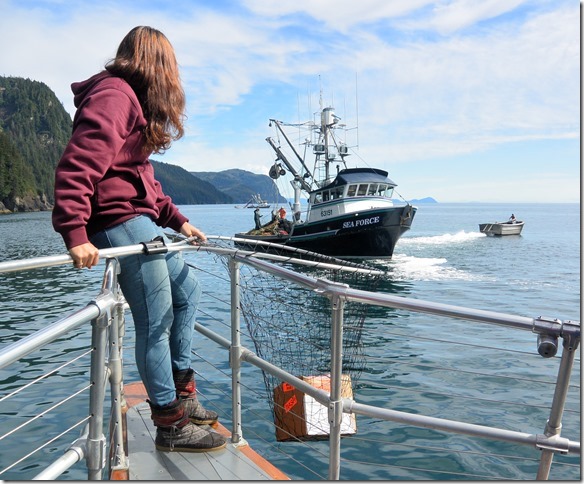
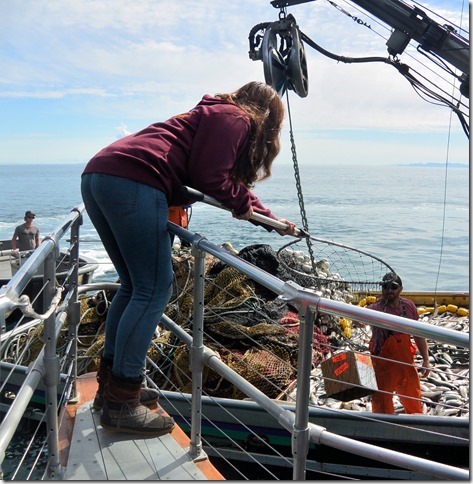
Obviously a happy guy – but is it because of the spare part, the brownies, or the pretty girl? Perhaps all three…
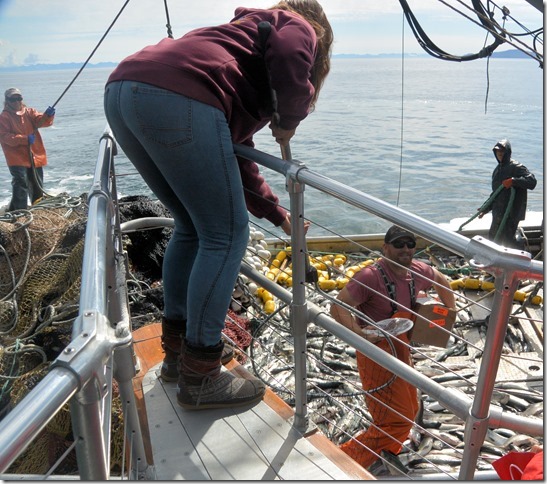
Leaving the fishing boat, we got a final farewell from the smallest deckhand. Then we headed outbound (again) for the Columbia glacier bay.
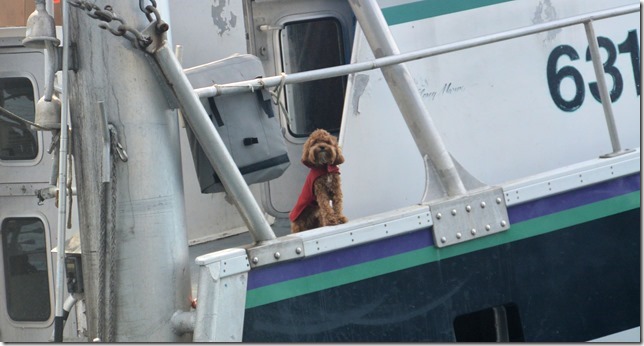
The Columbia glacier is famous for being one of the fastest-moving glaciers in the world – BACKWARDS! It has moved over ten miles back since it began its retreat around 1980. Fred and the Lu-Lu Belle have been touring it since then, and Fred showed us the marks on the mountainsides where the glacier used to rest. He also called out (from his depth-finder) the bottom’s rise from 700 feet up to 70 feet, marking the old terminal moraine field beneath our keel. Here’s an aerial shot (Megan’s postcard) of the Lu-Lu Belle, about 2012 or so, in the ice field near the glacier. The boat is barely visible at the lower right.
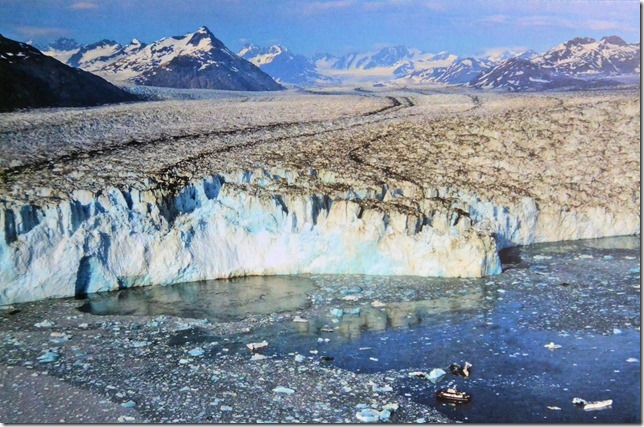
In the Lu-Lu Belle, we could get much more up close and personal with larger icebergs (too dangerous in a kayak).
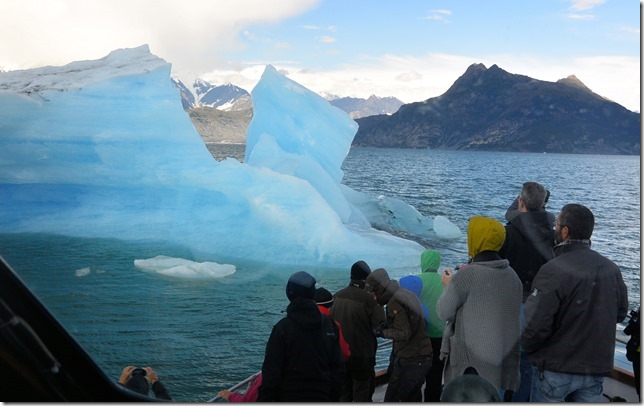
As we approached the main shelf of the glacier, temps dropped (water 35F, air 40F), and the floating ice became more dense. Lu-Lu Belle was proceeding slowly, bumping and nudging against stuff the sizes of anywhere between kitchen-stove and Volkswagen. The ice got thicker and thicker, and I was wondering whether the Lu-Lu Belle had a secret steel ice-crushing keel? (no, just kidding)
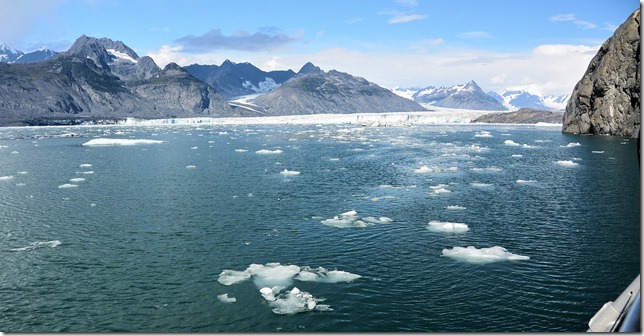
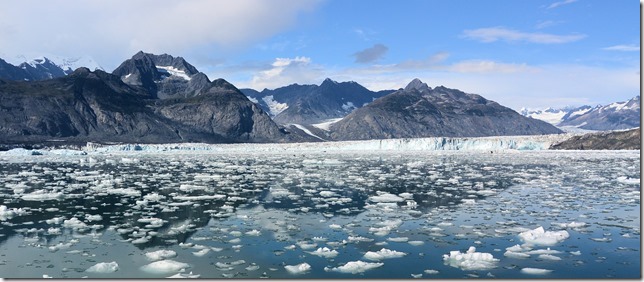
It looks like we are right next to the ice cliffs, but we’re really about a quarter-mile away. Those peaks are over 300 feet high. The calving is sporadic; cracking and sometimes cannon-shot noises alert us, and house-sized chunks of ice splash into the sea with huge sprays.
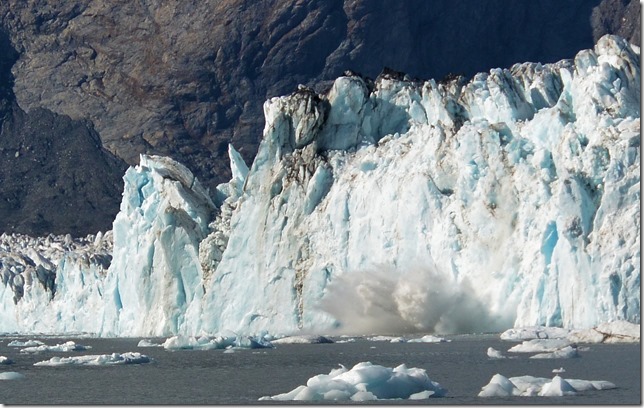
It’s really difficult to describe the feeling of watching a city-block-sized chunk of ice depart the glacier face and tumble into the ocean. Big six-foot swells come past us, and then an “ice current” ensues for at least a half-hour, with surface ice being pushed out away from the glacier face. It’s very disconcerting, because it feels like WE are getting closer to the monster. But in fact we’re also being pushed outward. In the next photo, the big blue chunk has just calved off of the main glacier. Its top broke off, then it shot up a hundred feet or more under the released weight, and finally toppled into the sea with a rumble like a big thunderstorm. It actually sank below the water, then bobbed up again, several times over several minutes. The deep blue shows how long it’s been compressed below the glacier. Its height was originally a hundred feet taller than the dirty peak above it in the picture.
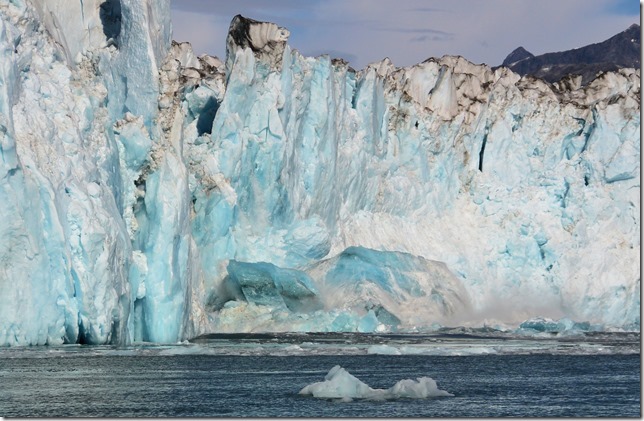
We relaxed in this area for more than an hour, just watching, listening, and marveling at the wonders around us. Everybody got their chance at a “Hi Mom” photograph in the bow pulpit. The Lu-Lu Belle comes equipped with Santa hats and a “Merry Christmas” placard for those who want to do their Christmas cards that way. We just settled for Hi Mom (Hi, Mom!).
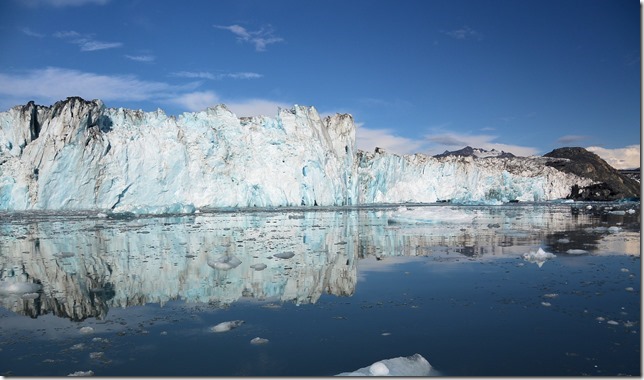
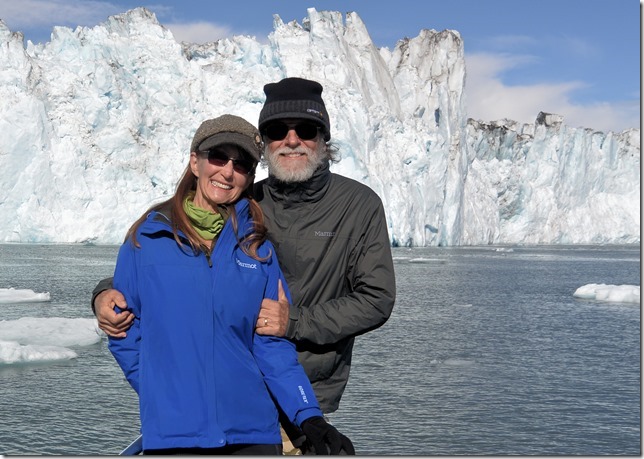
Leaving the glacier, more threading our way through the iceberg obstacle course.
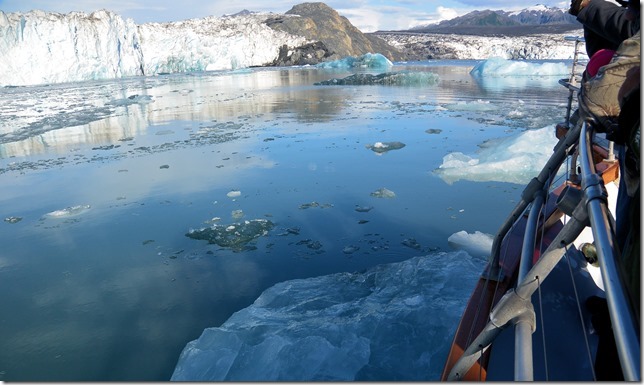
Past a certain size, you really don’t want to do any bumping. This one’s about the size of a Safeway market and we gave it a wide berth.
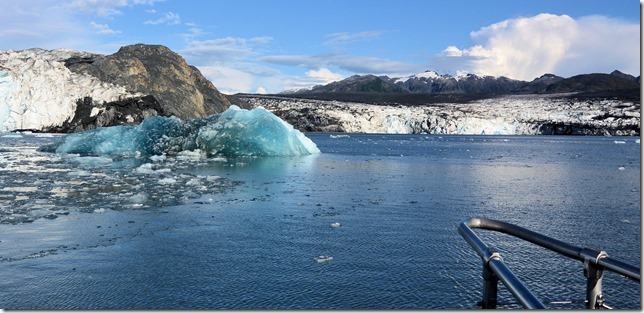
Radar is useless for this stuff. It’s strictly an eyeball-guided course.
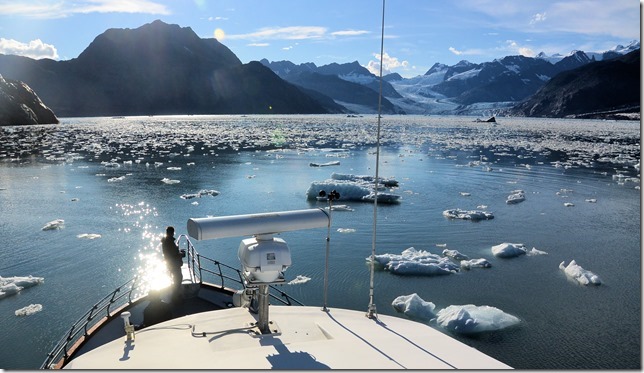
Close to the bay shoreline, we can easily see the glacial polishing of the rock, where the giant ice-river used to slide by. The behemoth has lost 10 miles in length and over 1,000 feet in thickness since 1979. This entire region was under hundreds of feet of ice only 35 years ago.
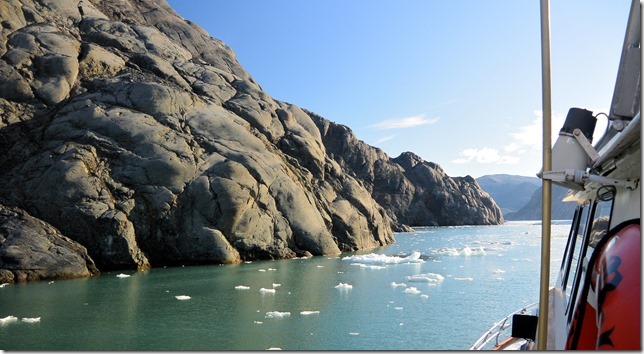
As we worked our way back out of the Columbia area, a companion glacier showed up on the far side of the bay. Sandwiched between the postcard sky and glassy water, it gave me an opportunity for a Nat-Geo shot. Sweet, huh?
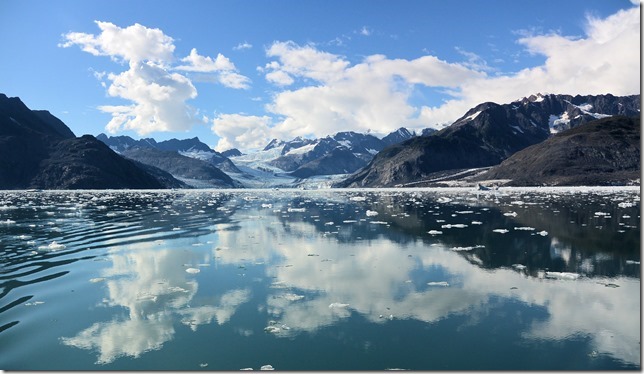
Even amongst the ‘bergs, the otters were to be found. All those millions of hairs seem to afford them ample protection from the frigid ice. They routinely hauled out onto convenient icebergs. However, they’re not as secure up on the ice as they are in the water, and most of them would leave as we approached for pictures.
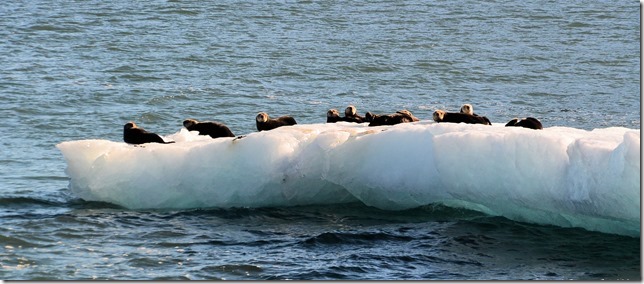
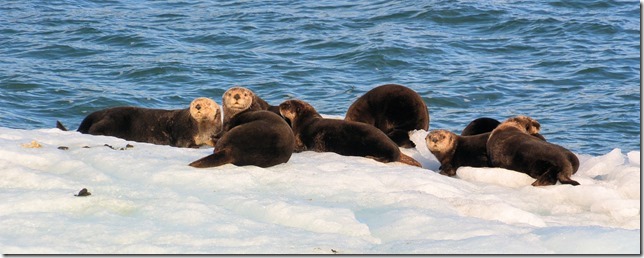
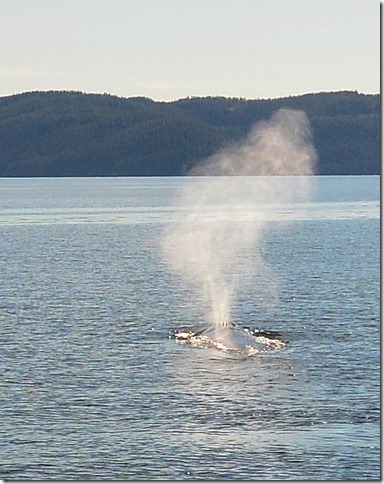
We’d hoped for some whale sightings, and for a while we saw some far-off breaching. The spouts were hundreds of feet into the air, visible from several miles away. Too bad, by the time we got there, they had ceased their deep-diving play, and we were able to get only an occasional glimpse of enormous backs sliding through the water.
Even when they’ve not surfaced, the big humpbacks leave a tell-tale track of surface eddies, “whale footprints” as Fred liked to call them. We followed several for quite a while, but still didn’t get a full-body look at the beasts. Ah well, that’s for another day.
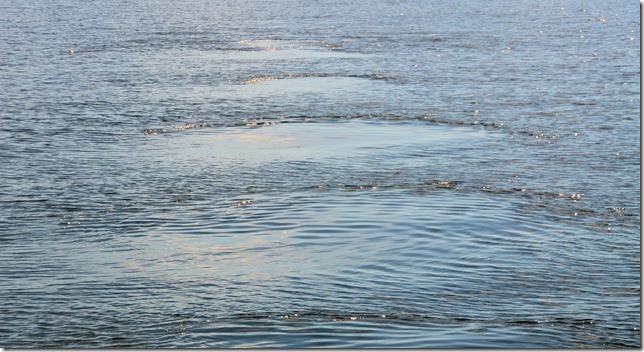
It’s hard to describe how gorgeously beautiful this particular day was. I felt like I couldn’t take a bad photograph. Prince William Sound is an intricate, multi-fjord construction with seas and mountains in all directions, all blissfully backed by cloud-studded skies. No matter which way I pointed my camera, wonderfully pretty scenes jumped into my viewfinder.
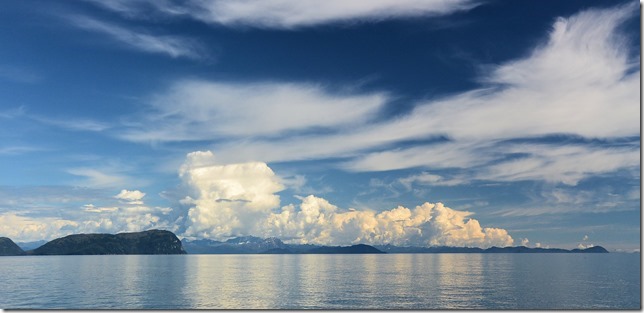
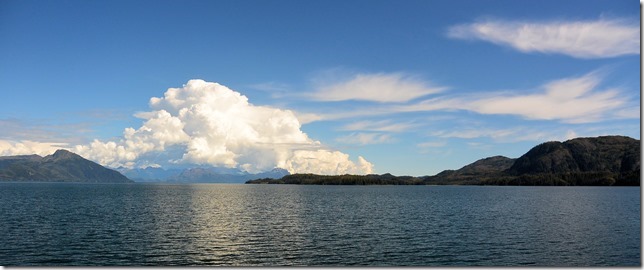
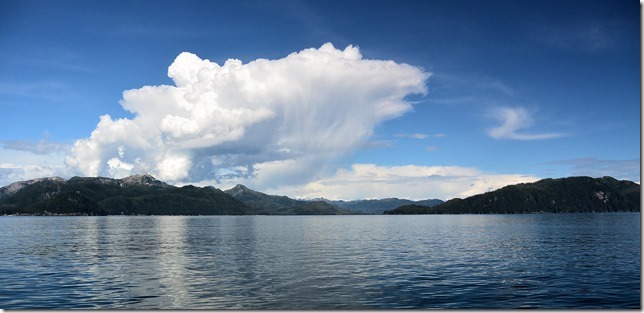
A long and wonderful ten+ hours later, we pulled back into our berth at Valdez, gratefully thanked Fred and crew for a fabulous day, and drove home to Howie in a warm glow. Life (as you know) is good.

Nice photos!
Most beautiful pictures ..I made up my mind …have to see it for myself..
Thanks Greg and karen..
where is Howie going next?
tony and marlene..
Pretty nice place, I know you’ll like it. We are starting to head back to the US48. Stopping in Jasper-Banff area for a bit. Other than that, no plans (as usual).
Posts are wonderful. Thanks to you both.
What a day! Fabulous! E (I am slowly working on our Cape York Blog!)
Enjoyed the post. We love Captain Fred & the LuLu Belle. Glad you made it to Valdez. Keep having fun…We are 😉